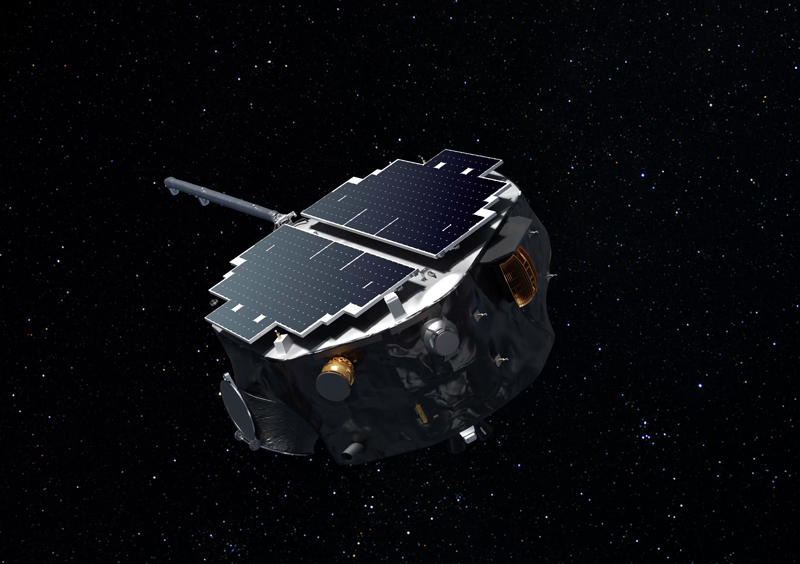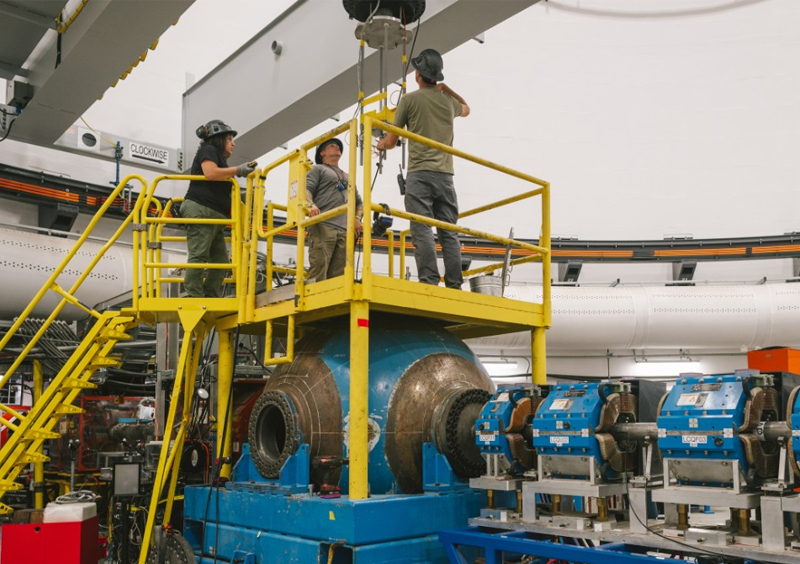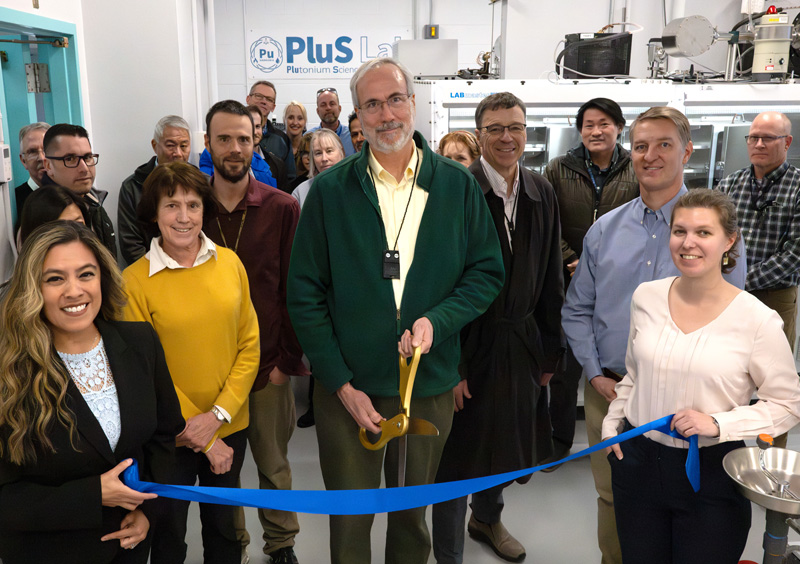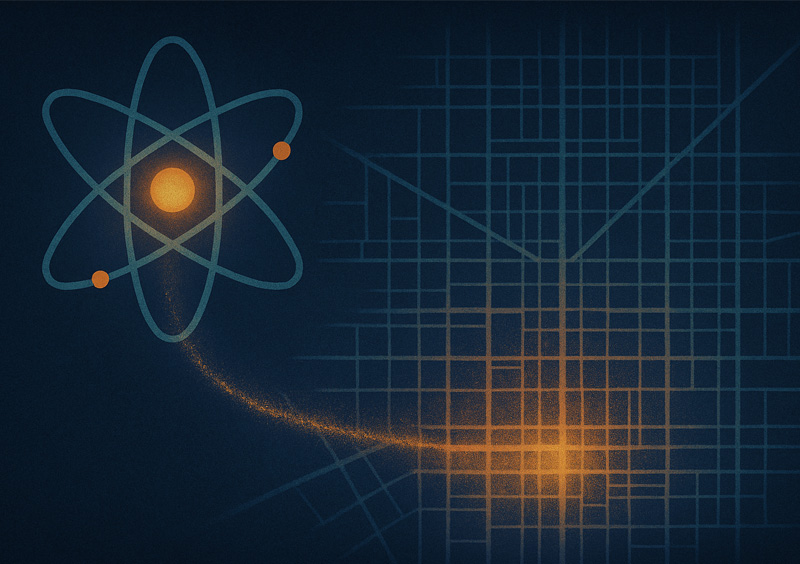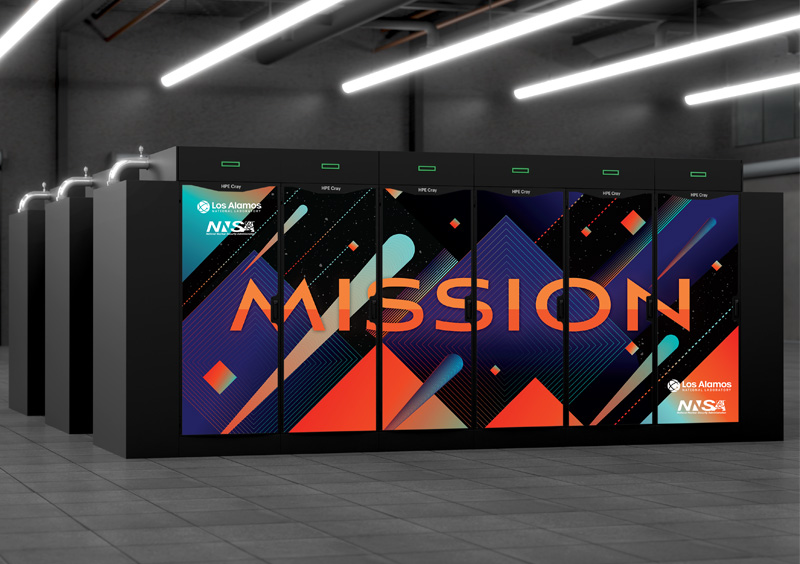Today, two scientific instruments developed at Los Alamos National Laboratory launched into space aboard a NASA spacecraft that will explore and chart the boundaries of the heliosphere — the bubble surrounding the sun and planets inflated by solar wind — and study how it interacts with the galactic neighborhood beyond.
Called IMAP (Interstellar Mapping and Acceleration Probe), the NASA mission will help researchers better understand the enormous and complex space environment of the sun, the Earth’s place in the stellar region, and how the interaction of solar and stellar winds form barriers against harmful cosmic rays, thereby helping to protect life on Earth and astronauts. IMAP will travel 1 million miles towards the sun, where it will continuously sample the passing solar wind and will also remotely observe the distant, roiling interaction of solar wind with the interstellar medium.
“We’ve been remotely studying the distant heliosphere for the last 17 years with another spacecraft called IBEX,” said Herb Funsten, a space scientist at Los Alamos and instrument lead for the IMAP-Hi instrument, which was developed at the Laboratory and is onboard IMAP. “We’ve learned a lot about this region of space where the sun’s space environment ends and the rest of our galaxy begins. But IMAP is so much more sophisticated. It will be like going from looking at Christmas lights in broad daylight to looking at them in the dark of night, wearing prescription glasses, and in more colors. We’ll be able to see things we’ve never seen before.”
IMAP-Hi collects, counts, measures and maps invisible particles called energetic neutral atoms (ENAs), which are formed when the more abundant energetic charged atoms — flying outward from the sun or coming in from interstellar space — interact with the tenuous interstellar gas atoms that permeate the heliosphere. These fast-moving charged particles grab electrons from the neutral ones, thus becoming energetic neutral atoms. “Measuring ENAs allows us to map the otherwise invisible boundary at the distant reaches of the heliosphere — without having to go there ourselves,” Funsten said.
Dan Reisenfeld, also a Los Alamos space scientist and deputy instrument lead on IMAP-Hi, agrees with Funsten that IMAP will allow for a more detailed picture of the heliosphere. “This is like going from the Hubble Telescope to the James Webb Telescope. The IBEX mission posed a lot of questions and gave us a better understanding of how our solar system interacts with the rest of the galaxy, and how the heliosphere doesn’t just protect our spacecraft from damaging radiation but the Earth, too, and, ultimately, our DNA from dangerous mutations because of radiation. But we have a lot more to learn.”
IMAP will draw a map of Earth’s nearby galactic neighborhood, and advance what is known about neutral atoms and space dust that have traveled that neighborhood, bringing clues about the solar system’s origins.
Additionally, the 10 scientific instruments aboard IMAP are equipped to observe a vast range of particle energies and types in interplanetary space to simultaneously investigate two of the most important overarching issues in heliophysics: the energization of charged particles from the sun and interaction of that solar wind with the winds from other stars and other material that fills the galaxy.
“We’re looking at particles coming from the sun that will make their way to the boundary of the heliosphere and affect the formation of neutral atoms,” said Ruth Skoug, a Los Alamos space scientist and instrument lead for the Solar Wind Electron (SWE) instrument, which collects and counts electrons from the solar wind. SWE and the other charged particle instruments on IMAP will provide real-time observations of the solar wind and energetic particles coming towards the Earth, which interact with the Earth’s environment and can cause geomagnetic storms that produce auroras but may pose a hazard to satellites or power systems on Earth.
“The position of IMAP will be about 1% of the way from the Earth to the sun, giving us about a half hour warning of space weather before it reaches Earth, or any spacecraft close to Earth,” said Skoug.
- For launch updates, visit the NASA IMAP (Interstellar Mapping and Acceleration Probe) Blog
- For more information about the IMAP mission, visit the NASA IMAP website
- For additional visual resources, visit the NASA Scientific Visualization Studio web page for IMAP
- NASA's news release
LA-UR-25-29376
